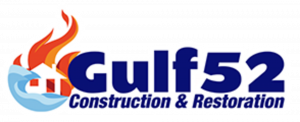Improper Documentation Identified as Major Cause of Insurance Claim Delays
Insurance companies rely heavily on thorough and accurate paperwork to assess damages, verify events, and process settlements. Missing, inconsistent, or unclear documentation creates gaps in the claims process, requiring additional investigations and extending resolution timelines.
Earl Carr, Jr., president of Gulf 52 based in Hammond, Louisiana, addressed the challenges that arise when documentation standards are not met.
"Documentation is the foundation of a successful insurance claim," said Carr. "When essential details are missing or incomplete, it introduces uncertainty. That uncertainty forces insurers to slow down the process while they seek clarification, additional evidence, or supplemental reports."
Claims adjusters are tasked with reviewing submitted evidence, including photographs, repair estimates, police reports, invoices, receipts, and witness statements. Each piece must clearly and consistently support the policyholder’s account of the loss. Gaps between submitted documents and actual events create red flags, prompting additional review steps that can significantly extend the claims timeline.
Some of the most common documentation issues leading to delays include:
Incomplete or missing claim forms
Lack of supporting photographs showing damages
Unclear or contradictory descriptions of events
Missing repair estimates or contractor invoices
Failure to include police or incident reports for applicable claims
Handwritten documentation that is illegible or lacks detail
Inconsistent dates, times, or location details
Claims involving natural disasters, such as hurricanes, floods, and tornadoes, present particular challenges because of the volume of simultaneous claims. In these situations, even small documentation errors can push a claim to the back of the processing queue while others with complete and clear submissions move forward.
Carr emphasized that documentation should be approached systematically, with clear organization and chronological presentation whenever possible.
"Effective documentation tells a story," Carr explained. "It walks the reviewer through the facts in a logical, consistent way. Strong claims packets leave no gaps that invite doubt or delay."
Technology has introduced improvements to the claims process, but it has not eliminated the need for thorough documentation. Many insurance companies now allow digital submissions of evidence, making it easier to upload photographs, estimates, and forms directly to claims portals. However, if the underlying information is incomplete or inconsistent, digital convenience alone will not speed up the process.
Proper documentation not only expedites claim approvals but also strengthens the claimant’s position during settlement negotiations. Comprehensive evidence leaves less room for disputes about the extent of damages, cause of loss, or fair value of repairs.
Contractors, public adjusters, and policyholders working together can significantly reduce processing time by adhering to best practices for documentation, including:
Taking extensive, time-stamped photographs immediately after a loss
Retaining copies of all communications with contractors, insurers, and other parties
Using clear, professional invoices and repair estimates
Keeping a detailed log of actions taken, conversations held, and inspections conducted
Providing multiple estimates if required under the policy
Submitting complete reports, including diagrams or damage assessments where applicable
Policyholders are also encouraged to review insurance policy requirements for documentation before a loss event occurs. Many policies outline specific expectations about proof of loss, repair standards, and timelines for submission. Understanding these requirements in advance can prevent costly mistakes during a claims process.
When disputes arise during the claims process, strong documentation becomes even more important. Discrepancies can be challenged and corrected with organized evidence, but poor documentation often weakens a claim’s credibility, making resolution more difficult.
In high-volume claim environments, such as post-disaster recovery periods in states like Louisiana, Mississippi, and Texas, insurers often triage claims based on the clarity and completeness of submitted documentation. Claims that are easier to verify and process are typically prioritized.
Carr noted that preparing a strong documentation package is not just about meeting requirements but about reducing stress and uncertainty for all parties involved.
"Good documentation brings order to what is often a very chaotic situation," Carr said. "It gives insurers confidence in the claim’s validity, leading to faster decisions and fairer outcomes."
Gulf 52 continues to support individuals, businesses, and contractors by providing guidance on building stronger claims through better documentation practices. The company emphasizes that small improvements in record-keeping and reporting can lead to significant improvements in claims outcomes, especially in high-stakes or time-sensitive scenarios.
As natural disasters, severe weather events, and other loss incidents remain a reality across the southern United States, understanding and addressing the role of documentation will continue to be a critical factor in ensuring prompt and fair claims resolution for property owners and businesses alike.
Morgan Thomas
Rhino Digital, LLC
+1 504-875-5036
email us here
Visit us on social media:
Facebook
Legal Disclaimer:
EIN Presswire provides this news content "as is" without warranty of any kind. We do not accept any responsibility or liability for the accuracy, content, images, videos, licenses, completeness, legality, or reliability of the information contained in this article. If you have any complaints or copyright issues related to this article, kindly contact the author above.
Dr. Kevin Sadati Present his Preservation Facelift Technique at Vegas Cosmetic Surgery and UC Irvine
New York Cosmos Relaunches as Fan-Owned, City-Driven Club
MRC Restoration Responds in 25 Minutes to Water Leak, Prevents Major Damage for Bonne Terre Homeowner
Kalendarium
Więcej ważnych informacji
 Jedynka Newserii
Jedynka Newserii

 Jedynka Newserii
Jedynka Newserii

Prawo

Trwają dyskusje nad kształtem unijnego budżetu na lata 2028–2034. Mogą być rozbieżności w kwestii Funduszu Spójności czy dopłat dla rolników
Trwają prace nad wieloletnimi unijnymi ramami finansowymi (WRF), które określą priorytety wydatków UE na lata 2028–2034. W maju Parlament Europejski przegłosował rezolucję w sprawie swojego stanowiska w tej sprawie. Postulaty europarlamentarzystów mają zostać uwzględnione we wniosku Komisji Europejskiej w sprawie WRF, który zostanie opublikowany w lipcu 2025 roku. Wciąż jednak nie ma zgody miedzy państwami członkowskimi, m.in. w zakresie Funduszu Spójności czy budżetu na rolnictwo.
Konsument
35 proc. gospodarstw domowych nie stać na zakup mieszkania nawet na kredyt. Pomóc może wsparcie budownictwa społecznego i uwolnienie gruntów pod zabudowę

W Polsce co roku oddaje się do użytku ok. 200 tys. mieszkań, co oznacza, że w ciągu dekady teoretycznie potrzeby mieszkaniowe społeczeństwa mogłyby zostać zaspokojone. Jednak większość lokali budują deweloperzy na sprzedaż, a 35 proc. gospodarstw domowych nie stać na zakup nawet za pomocą kredytu. Jednocześnie ta grupa zarabia za dużo, by korzystać z mieszkania socjalnego i komunalnego. Zdaniem prof. Bartłomieja Marony z UEK zmniejszeniu skali problemu zaradzić może wyłącznie większa skala budownictwa społecznego zamiast wspierania kolejnymi programami zaciągania kredytów.
Problemy społeczne
Hejt w sieci dotyka coraz więcej dzieci w wieku szkolnym. Rzadko mówią o tym dorosłym

Coraz większa grupa dzieci zaczyna korzystać z internetu już w wieku siedmiu–ośmiu lat – wynika z raportu NASK „Nastolatki 3.0”. Wtedy też stykają się po raz pierwszy z hejtem, którego jest coraz więcej w mediach społecznościowych. Według raportu NASK ponad 2/3 młodych internautów uważa, że mowa nienawiści jest największym problemem w sieci. Co więcej, dzieci rzadko mówią o takich incydentach dorosłym, dlatego tym istotniejsze są narzędzia technologiczne służące ochronie najmłodszych.
Partner serwisu
Szkolenia

Akademia Newserii
Akademia Newserii to projekt, w ramach którego najlepsi polscy dziennikarze biznesowi, giełdowi oraz lifestylowi, a także szkoleniowcy z wieloletnim doświadczeniem dzielą się swoją wiedzą nt. pracy z mediami.










.gif)

 |
| |
| |
|